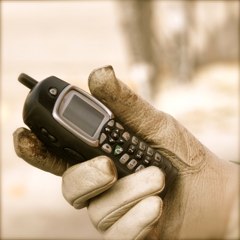If I had one hour to save the world, I would spend the first 55 minutes defining the problem. – Albert Einstein
Think about it – don’t we often do the exact opposite in our daily work lives? How often do we spend the time planning that is necessary to REALLY get the job done – and done well?I have a friend who is a reference librarian. The first thing he does when faced with a patron’s question is to identify the root of the question – what does the person REALLY need to know? For example, someone asking for history books or resources may actually be looking for information about period costumes from the late 1800s! Clearly, not everyone is skilled at focusing in on communicating exactly what he or she needs to know. My friend is trained to ask pointed questions before moving forward with what could be a wild goose chase for an answer to the wrong question!
Look around – you are bound to see this happening all around you: people running after the answers to problems without stopping to identify the goal.
The following is a story that illustrates how important it is to understand your problem before you attempt to solve it.
Motorola has been reducing the size of their cell phones for years. Some of the first cell phones were the size of backpacks and now they weigh just a few ounces. Along the way, Motorola’s customers requested bigger buttons. That is a tough request when the goal is to make everything smaller.
Motorola did some research and learned this request was coming from a specific market: firefighters, rescue workers, construction workers, miners and the like. In most cases, this niche market needed to use a cell phone in low visibility conditions while wearing gloves. Ultimately the solution was to provide a phone that operated by squeezing the phone. The firefighters did not know this was possible—and neither did Motorola—when this request came in.
The firefighters thought they needed bigger buttons, but once Motorola understood what these customers were trying to accomplish—using a cell phone in low visibility with gloves on—it found a reasonable solution. Motorola developed a cell phone that could dial and communicate when the user squeezed the phone in different patterns similar to Morse Code.
There may be a difference between what you think you need and what you are trying to accomplish. That is why you need to plan out your desired destination before determining what you need to get there.
What are you doing to identify your goal?
After completing the Communicate to Win workshop, you will know how to outline your plan and how to get where you really need to go. With this complete package, you will gain the tools necessary to guarantee that you have the best ideas and that you can present them confidently so you will WIN.
photo by Katrina Snaps. Used by permission.

Pingback: uberVU - social comments
Pingback: How to connect with and engage your audience with a strong opening | Fast Track Tools by Ken Revenaugh
Pingback: How to become a strong communicator – collect stories and factoids | Fast Track Tools by Ken Revenaugh
Pingback: How to write a presentation – where to begin? | Fast Track Tools by Ken Revenaugh